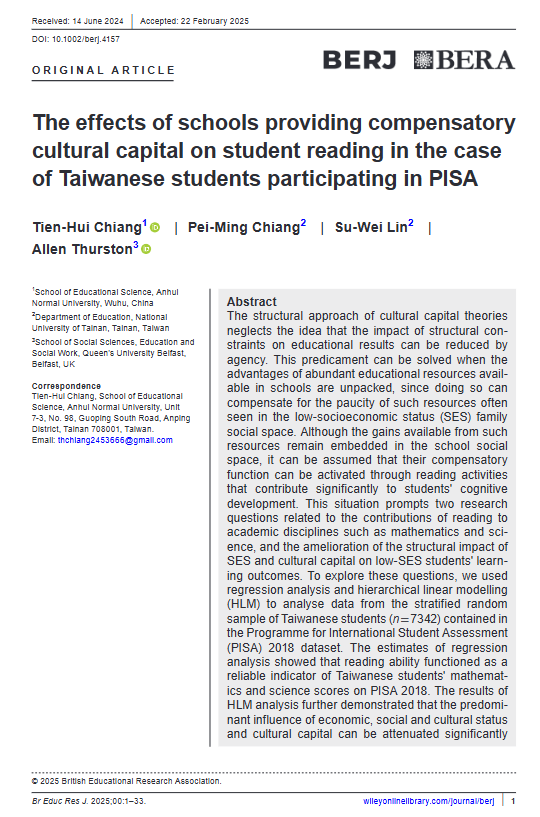《British Educational Research Journal》2025年3月18日第51卷第2期
The structural approach of cultural capital theoriesneglects the idea that the impact of structural con-straints on educational results can be reduced byagency. This predicament can be solved when theadvantages of abundant educational resources avail-able in schools are unpacked, since doing so cancompensate for the paucity of such resources oftenseen in the low-socioeconomic status (SES) familysocial space. Although the gains available from suchresources remain embedded in the school socialspace, it can be assumed that their compensatoryfunction can be activated through reading activitiesthat contribute significantly to students' cognitivedevelopment. This situation prompts two researchquestions related to the contributions of reading toacademic disciplines such as mathematics and sci-ence, and the amelioration of the structural impact ofSES and cultural capital on low- SES students' learn-ing outcomes.










